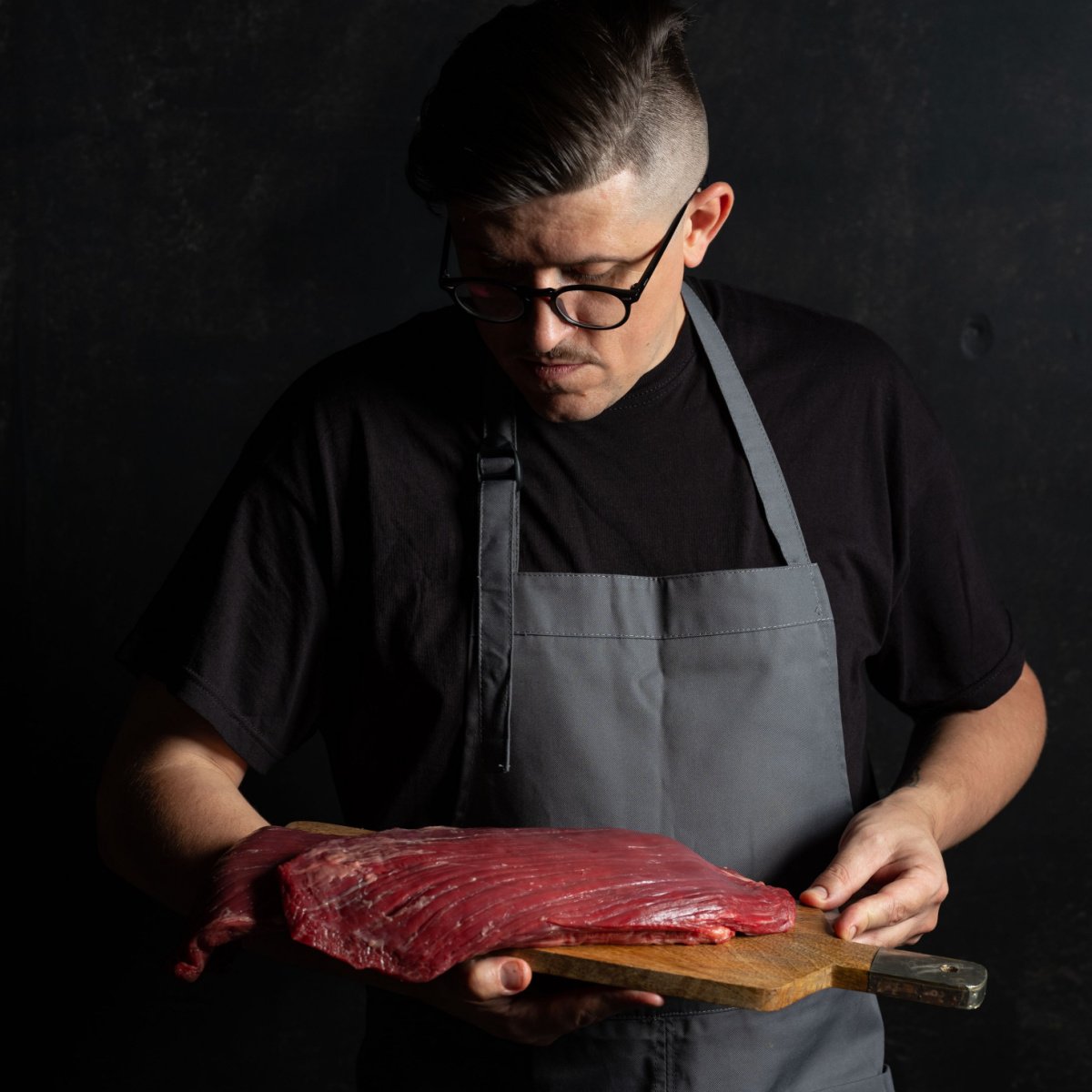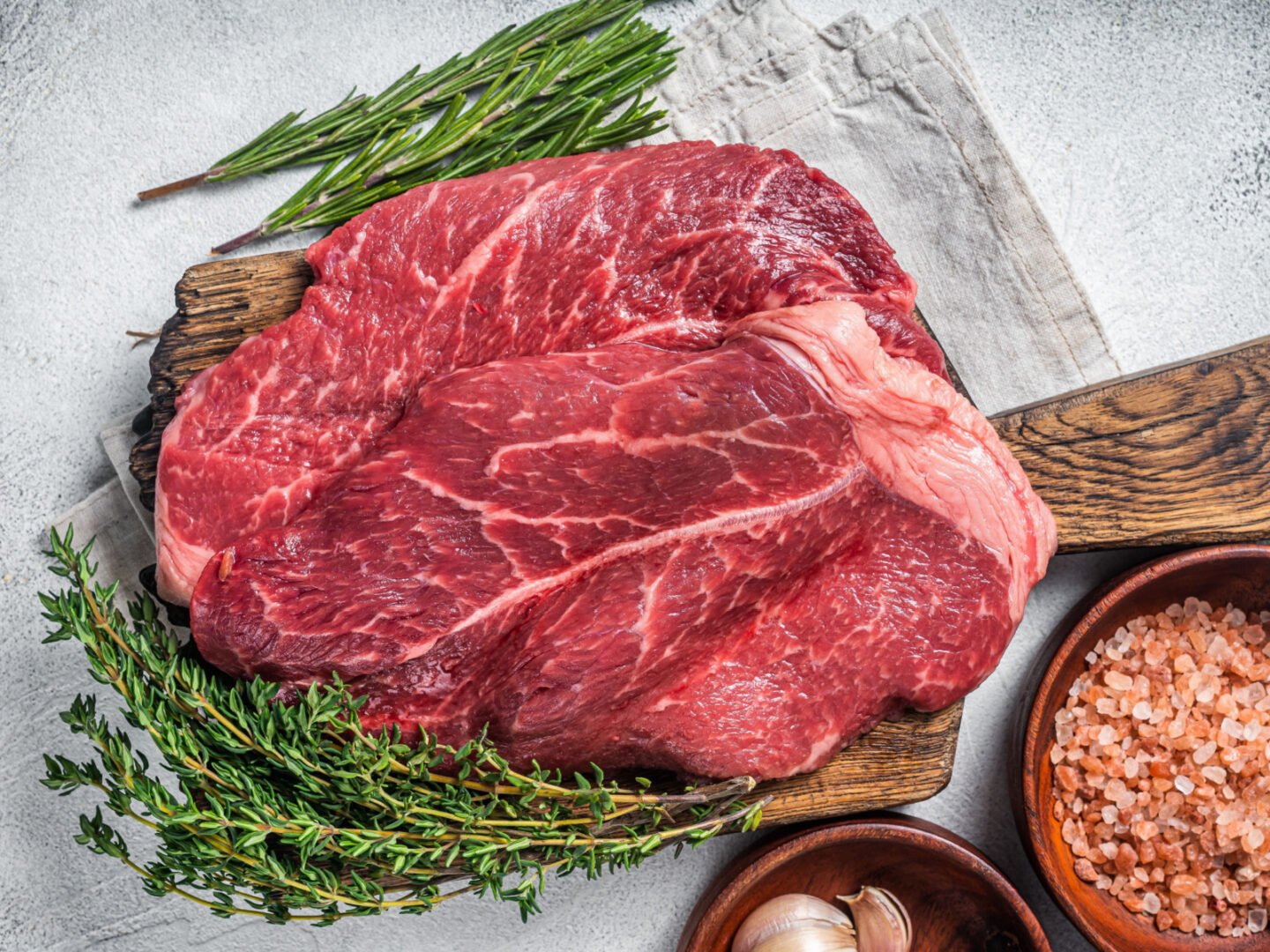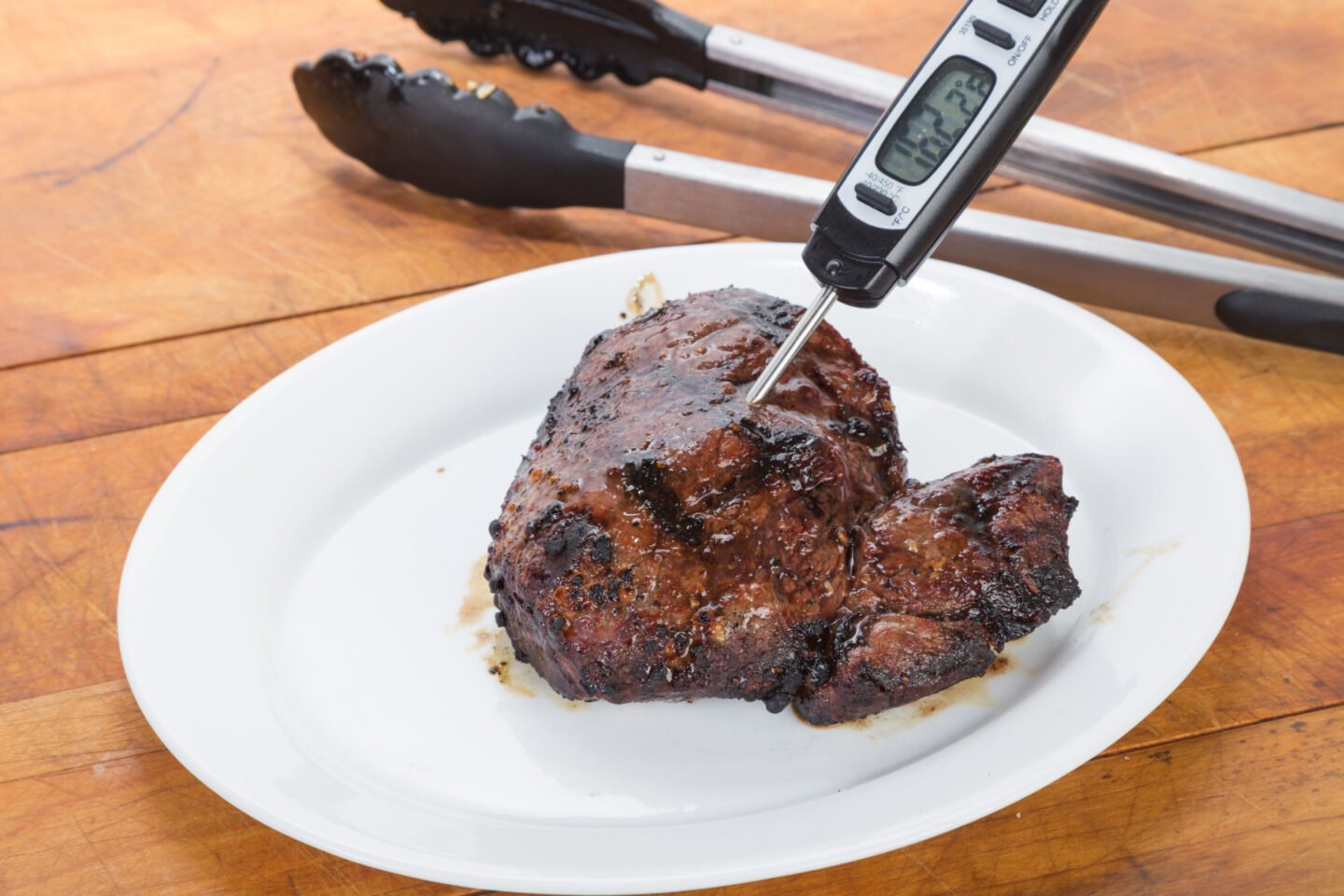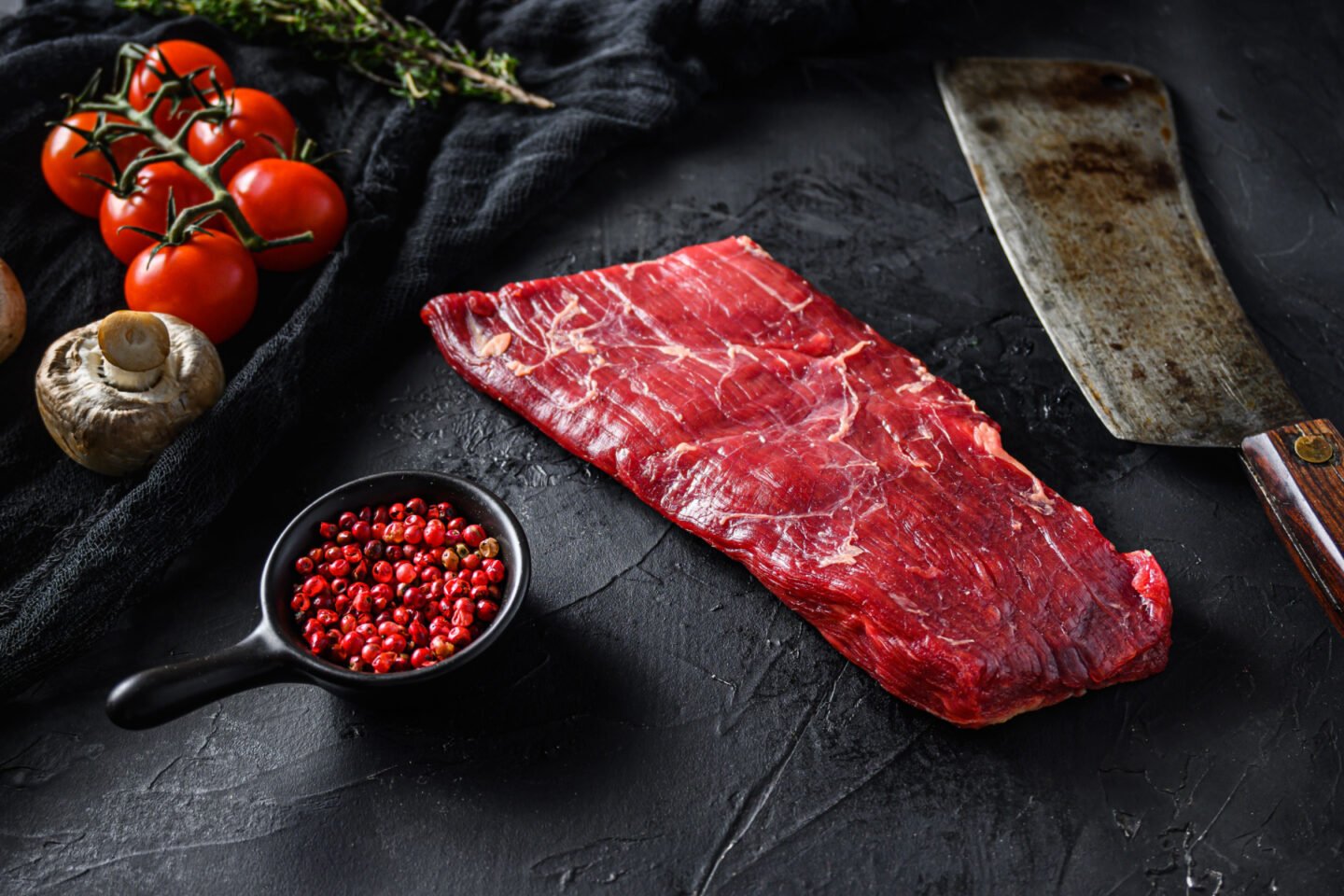The main difference between flank steak and sirloin is its taste and texture; flank steak is tougher and chewier with a more intense beef taste. On the other hand, sirloin is tender with a milder, sweeter flavor.

Due to this difference, flank steak and sirloin steak have different cooking temperature requirements, nutrition profiles, and substitutions.
Read on to learn how flank steak and sirloin steak are different in how they are cut, how they taste and feel, how they are cooked, how healthy they are, how much they cost, and what you can use instead.
Table of Contents
- What is a Flank Steak? An Overview.
- What is a Sirloin? An Overview.
- Flank Steak vs. Sirloin: Cut Origin
- Flank Steak vs. Sirloin: Taste and Texture
- Flank Steak vs. Sirloin: Cooking Temperatures
- Flank Steak vs. Sirloin: Nutrition
- Flank Steak vs. Sirloin: Price Point
- Flank Steak vs. Sirloin: Substitutes
- Related Questions
What is a Flank Steak? An Overview.
Flank steak is a lean cut of beef that comes from the abdomen and contains more muscle fiber than sirloin steak. It is an inexpensive beef cut with a long, flat shape and a tough texture.
Due to its tendency to become chewy and tough, people often marinate or braise it to make it more tender. You can use flank cut in many different dishes, such as stir-fries, fajitas, tacos, and meals made in the Instant Pot.
Moreover, you can also grill, pan-fry, or broil a flank steak. Due to its lean nature, it is essential not to overcook the steak, as it will become tough and chewy.
What is a Sirloin? An Overview.
The sirloin is cut from the area between the short loin and the round. You often find it divided into several different cuts, including the top sirloin, bottom sirloin, and sirloin tip. Each cut is leaner and more tender than the one before it.
The top sirloin is the most tender and flavorful of the sirloin cuts. It is an excellent choice for grilling, pan-frying, or roasting. It is also great for slicing into steaks or cubes for stir-frying.

The bottom sirloin is the least tender of the sirloin cuts. It is best suited for braising, roasting, or slow cooking. It is also great for making ground beef, stew meat, and kebabs.
The sirloin tip is a good choice for grilling or roasting. It is leaner than the other sirloin cuts, so it is best to cook it quickly at a high temperature. It is also great for slicing into steaks or cubes for stir-frying.
Flank Steak vs. Sirloin: Cut Origin
One of the main differences between flank steak and sirloin steak is the origin of the cut. Flank steak comes from the lower abdominal region of the cow, while sirloin steak comes from the upper hip area.
Due to this difference, they also differ in taste, texture, and cooking suggestions.
Flank Steak vs. Sirloin: Taste and Texture
Sirloin is usually much more tender than flank steak, and it has a mild flavor with a hint of sweetness. Its tenderness allows you to cook it quickly and easily, making it an excellent choice for weeknight dinners.
On the other hand, flank steak has a much more intense flavor and a chewier texture. To make it perfectly tender, you need to cook it slowly and carefully, which makes it a great candidate for grilling.
When it comes to texture, sirloin steak offers a much more tender bite, while flank steak has a chewier texture.
Flank Steak vs. Sirloin: Cooking Temperatures
Even though flank steak and sirloin are great choices for medium-rare to medium, the exact temperature varies slightly.
For medium-rare, the internal temperature of the flank steak should be between 135 and 145 degrees Fahrenheit. For a medium level of doneness, the temperature inside should reach between 145 and 155 degrees Fahrenheit.

On the other hand, sirloin steak is one of the more tender and flavorful cuts. You can cook it to medium-rare or medium doneness with an internal temperature of 140 to 150 degrees Fahrenheit for medium-rare and 150 to 160 degrees Fahrenheit for medium.
Flank Steak vs. Sirloin: Nutrition
While flank steak and sirloin steak are healthy meat options, they offer different nutrients.
Beef sirloin contains higher levels of vitamin B3, vitamin B6, zinc, phosphorus, and selenium. On the other hand, flank steak has more vitamin B12 and monounsaturated fat, a healthy type of fat, and a lower saturated fat content.
Nevertheless, both beef cuts are excellent sources of protein and iron and have a lower fat content than other steak cuts, making them both healthy protein sources.
Flank Steak vs. Sirloin: Price Point
Flank steak and sirloin steak don't differ much in their prices. Depending on your location, you can find either for $9 to $12 per pound.
Flank Steak vs. Sirloin: Substitutes
Since flank steak and sirloin are different in taste and texture, they can also be replaced by different meats.
The best cut to use for flank steak substitution is a beef skirt (also known as a "skirt steak"), hanger steak, tri-tip steak, flat iron steak, top round steak, flap steak, or top sirloin steak.
On the other hand, you can use tenderloin steaks such as filet mignon, bavette steak, tomahawk steak, porterhouse steak, T-bone steak, porterhouse, ribeye steak, chuck steak, New York strip steak, or skirt steak if you're looking for a tender steak cut to use as a substitute for top sirloin steak.

Related Questions
Skirt steak is better than flank steak if you still want that thin, flat steak with more fat for that tender, juicy meat.
Sirloin contains more fat and marbling, making it more tender than flank steak.
Yes, sirloin is a versatile steak cut you can use instead of flank steak.

Leave a Reply